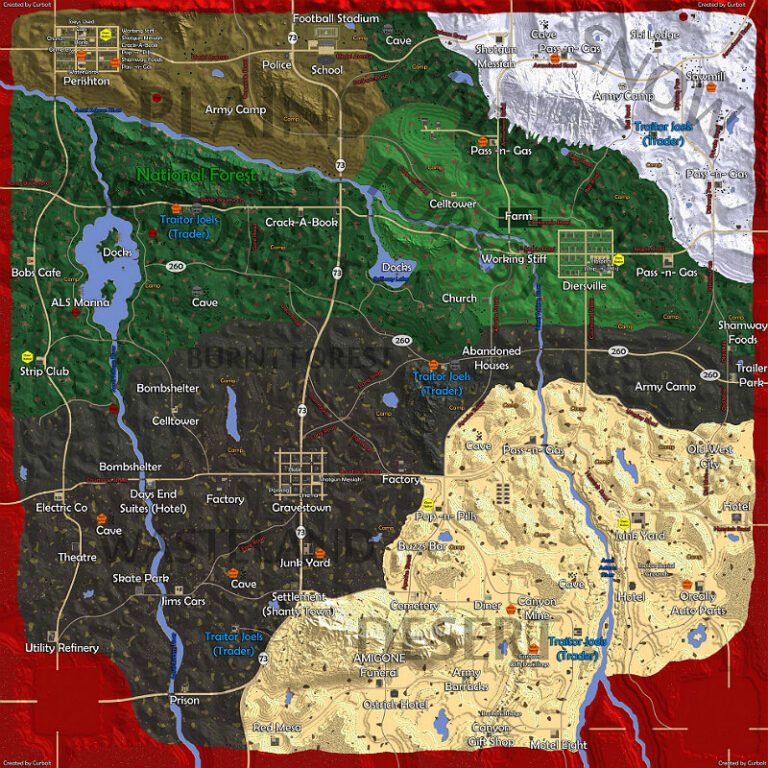

Gunslinger – While melee is preferred in the early game, you’ll eventually utilize more firearms down the road.

Sure, you can loot your death bag and pick everything up, but wouldn’t it make more sense to avoid death altogether? Healing Factor allows you to passively heal so long as you’re not taking damage. You’ll respawn but it may not be anywhere close to your base unless you placed a bedroll, but you’ll lose your inventory and equipment. Healing Factor – Dying in 7 Days to Die is tough going.It’s critical you select the right perks early on to help ease your survival experience.

Choosing the Right PerksĪs you kill zombies, complete quests, and loot points of interest, you’ll receive experience points to purchase new perks. Eventually, you’ll unlock crafting recipes to create your own weapons back at base.
#7 days to die guide upgrade
When it comes to your base, upgrade materials, add in new levels, place traps, and create kill boxes or funnels to help you survive each weekly horde.įor food, you’ll eventually build a farm or small garden to produce your own goods.Īs for weaponry, you can acquire new weapons by completing quests for the various traders and by looting points of interest scattered about the map. The key is to focus on upgrading your character, equipment, and base over time. You’ll start off weak, with nothing but rudimentary tools and weapons, like a homemade bow or club, and eventually, find yourself trekking through biomes in an armored 4×4 with an assault rifle on your back. Focus on Upgradesħ Days to Die features a sort of natural progression. The same goes for the snow biome, which plays host to countless hostile mobs, like dire wolves and big cats, which will tear your face apart quickly. You’ll find all you need weapons, foot, water, etc.īut once you start to progress, you’ll begin to explore other biomes around the map.įor now, you’ll want to avoid the wasteland, which is considered the most difficult to survive but also comes with the best rewards. It’s one of the easiest to survive, though its loot table is rather lacking. In the early game, you’ll likely spawn in the forest biome. In the early game, you’ll wind up looting most of your food supplies, like canned goods and fresh vegetables or berries.Įventually, you’ll have a durable base with a little spare room for gardening or a full-blown farmstead. Otherwise, you can loot water and other drinks, like soda, from containers at various points of interest. You can find water via natural sources, like wells and rivers, though you’ll want to sterilize any water you find from such locales. It’s crucial that you remain on top of your food and water in 7 Days to Die. Yeah, I touched upon this topic in another guide, but I’ll reiterate here if you have yet to read that one. Acquire perks using accumulated experience points.Collect animal bones, feathers, and other naturally-occuring resources in the forest biome.Scrap any unwanted resources for more useful crafting materials.Save your ammunition for horde night, use melee weapons or bows.Complete quests for the nearest trader to earn loot, experience, and to build a relationship.Loot every container and crate you can find.Here’s a quick rundown on what you should prioritize in the early game. First, getting past the first horde, securing food and water, and building up a base should be your main priorities! Early Game Survival Tips Once you make it to mid- late-game, you’ll have a good foothold in the game to survive for the long run. But hey, if you have a few early-game survival tips for 7 Days to Die, you too can beat back the undead hordes, find rare loot, and build an indestructible base! It’s not uncommon for new players to fall flat on their faces during the first wave. Let’s be honest with ourselves here, 7 Days to Die is a tough zombie survival game.


 0 kommentar(er)
0 kommentar(er)
